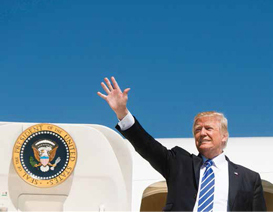
US President Donald Trump has unveiled his ‘America First national security strategy’ giving India a leadership role in the broader Indo-Pacific region and taking a hard line on China and Russia. The security plan released on Monday said: “We will deepen our strategic partnership with India and support its leadership role in Indian Ocean security and throughout the broader region. We welcome India’s emergence as a leading global power and stronger strategic and defense partner. We will seek to increase quadrilateral cooperation with Japan, Australia and India,” said the statement. Trump’s security strategy also stated that the US would continue to push Pakistan to speed up its counterterrorism efforts.
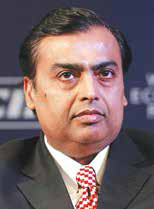
Reliance Industries Limited Chairman Mukesh Ambani outlined his vision for taking the firm among the top-20 companies in the world and making it a leading provider of clean energy. Ambani, who delivered the keynote address at Reliance Family Day, said regarding the leadership position of Reliance Industries, “Today, Reliance is a global leader in energy and materials, where operating safely is an obsession. With Jio and retail where Reliance has established a leadership position in India, we are customer-obsessed. Can Reliance be amongst the top-20 companies in the world? Yes, we can, and yes, we will,” he said at the keynote address. Mukesh Ambani also focused on clean energy, saying that in the coming decades, the world will see a transition from fossil fuels to clean, green and renewable energy sources. He envisioned that RIL would be at the forefront of this transition. “Can Reliance become a leading provider of clean and affordable energy to India? Yes, we can... and yes, we will,” Ambani said.

Ride-hailing player Ola is making an entry into the food delivery space again, this time by acquiring Foodpanda India from Germany-based Delivery Hero Group.
While the companies did not disclose the details of the deal size, sources have pegged the stock-based acquisition at under $50 million. The move will also see Ola invest another $200 million, as it takes on rival UberEats and incumbents like Zomato and Swiggy.
According to analysts, Ola has acquired the third largest player in the food delivery business in India and is focused on broadening its range of services, including the food delivery segment, after Ola Cafe failed to take off in 2015. Saurabh Kochhar, former CEO of Foodpanda India has left the company and Pranay Jivrajka, founding partner at Ola has been appointed as the interim CEO of Foodpanda and will work with the existing leadership team at the company.
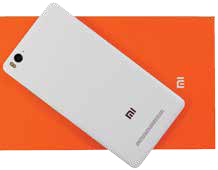
Chinese smartphone maker and electronics giant Xiaomi has emerged as the top market share holder in top 50 cities in India in Q3, according to a report by IDC. According to the report, Xiaomi grew 120 percent in Q3 with Redmi Note 4 contributing to about 40 percent of total sales for the company. Redmi Note 4 was also the ‘highest selling model within the top 50 cities of India.’ IDC highlighted that Xiaomi’s efforts at expanding its offline reach with the help of Mi Stores and ‘Preferred Partner’ programmes have helped the company grow. Samsung slipped to the second spot despite observing 15 percent quarterly growth. The company continued to rule a number of cities because of its reach and penetration. Lenovo maintained its third spot with 8 percent quarterly growth as New Delhi, Bengaluru and Mumbai accounting for 40 percent of the total sale. Moto E4, Lenovo K6 Power and K6 Note drove the majority of the sales for the company along with the Motorola sub-brand. Other players like Oppo and Vivo came at fourth and fifth spot, respectively. Oppo moved up as an increasing number of customers chose F3 and F3 Plus as their smartphones with recently launched A71 gaining momentum. Vivo slipped to the fifth spot because of reduced channel spends.
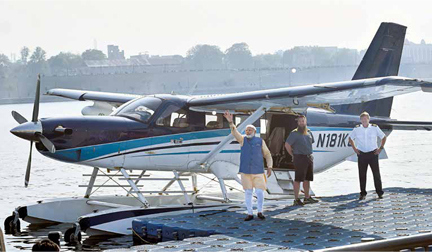
Prime Minister Narendra Modi’s seaplane from the Sabarmati river marking a dramatic end to a gruelling election campaign, the flight created huge waves in Gujarat’s politically turbulent waters, but very few people are aware of what this plane is all about. It is a fixed wing, singleengine, turbo, prop aircraft with a tricycle-fixed landing gear, equipped with 10 seats. The cabin of the seaplane isn’t pressurised, that is, no air-conditioning, as it flies below 10,000 feet, and there is no stand-up cabin. One has to bow, bend to enter and exit aircraft. It can fly non-stop up to 1,500-2,000 km, which is the distance from Ahmedabad to Dubai. This aircraft is a product manufactured in Idaho, US; engine manufactured by Pratt and Whitney, Canada. It can take off within 285 metres on land and can climb up to 396 metre per minute and land on uneven or difficult runways within 215 metre. And can also take off in six-feet-depth and can climb at 369 metres per minute. It was former aviation minister Praful Patel who had launched the first seaplane ‘Jal Hans’ at Juhu aerodrum in December 2010. These seaplanes plied between Havelock and Port Blair in Andaman and Nicobar islands. However, the operation was stopped in 2014 due to financial non-viability and non-renewal of agreement. Kerala did have the privilege as the first seaplane took off from Kollam in June 2013, but its commercial operations never started.
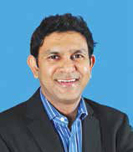
As the year comes to a close, it is the start of New Year resolutions. In the case of Lenovo chief Rahul Agarwal, the end of the year is a chase towards completing a resolution he made at the start of the year—completing 300 days of working out. The MD of the technology company said that he aimed to beat his 2016 record of 298 days, this year. Posting his journey on a social media platform earlier this month, Agarwal wrote, “24 workouts away from hitting the magical 300 for the year. Part of me is telling me that it’s perhaps not so important to put such aggressive goals… look for more balanced and wholesome fitness.” Now that’s inspirational, wouldn’t you agree?
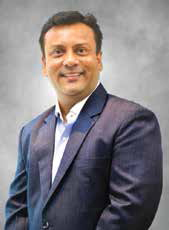
DHFL Pramerica Life Insurance, appointed Sharad Sharma as the SVP and Head-HR. Sharma with over two decades of experience in both domestic and international companies will add to boost the firm both within Indian and overseas market. Sharma’s, previous stint has been with SBI Card, where he was the EVP and Chief People Officer and headed HR for GE’s BPM unit and the HR function for the credit card JV between GE Capital and State Bank of India. It is understood that his move has come in after GE’s exit from the business. Sharma believes that the insurance sector in India has a huge potential for growth, and is the reason for him to make the move. A Delhi University graduate and who also holds PG diplomas in IR and PM and also in training and development, Sharma’s role at DHFL Pramerica, will be looking at capability-building distribution, along with scalability. He will also be looking at the digital journey for HR in the coming times, which will be an exciting phase for HR professionals in the insurance sector. As the DHFL Pramerica is looking ahead at the transformation and next phase of expansion, the HR agenda is also going to be significant, which has attracted him towards joining them.
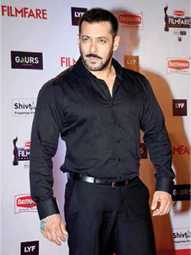
Salman Khan is once again the highest-earning celebrity in India. For the second time in a row, the Dabangg Khan has taken the top spot in the Forbes list of top 100 Indian celebrities. Following him on the list is Badshah of Bollywood, Shah Rukh Khan, Indian skipper Virat Kohli, Khiladi Akshay Kumar and others. Aamir Khan who was at the 14th position last year has witnessed a major jump in his position. This year he is at the sixth position, defeating Priyanka Chopra, Hrithik Roshan and Ranveer Singh. According to the list published by the magazine, the total earnings of Salman for the year 2017 stands at Rs.232.83 crore which constitutes 8.67 per cent of the total earnings—Rs.2,683 crore-of the top 100 celebrities of the year. Shah Rukh’s total earnings for the year as quoted by the magazine is Rs.170.50-crore and Virat grabs the third position in the list with Rs.100.72 crore in his kitty. However, the top-three names are in the same order as they were on the 2016 list. Also, the growth of the South Indian film industry reflected on the Forbes list of 100 celebrities as 13 actors from down south made it to the list. This included Prabhas and Rana Daggubati of Baahubali fame, among others. The number of Bollywood actors is down from 35 to 33, reducing their cumulative earnings by 13 per cent from the previous year.

Apple Inc, the maker of iPhones, is now within touching distance of crossing $2 billion in sales from India, although the world’s most valuable technology company faced significant headwinds late last year because of the impact of demonetisation, which slowed down the pace of its growth in the country and hurt sales.According to documents posted with the Registrar of Companies on Tuesday, Apple India Pvt Ltd posted sales of Rs.11,619 crore ($1.8 billion) for the year ended March 2017, compared with Rs.9,937 crore in the year-ago period—which translates to a 17% growth in a country, which Apple globally has termed as one of its fastest growing markets. In the preceding 12 months ended March 2016, Apple India had reported a growth of 53%.
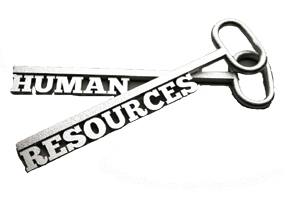
Workforce Agility Barometer Report, ‘Navigate Asia Pacific’s Future Talent Frontier’ by Kelly- OCG revealed that in India, HR is more valued than its neighbouring countries. The study was conducted amongst 210 C-suite-level executives across India, Singapore, Australia, and Malaysia from industries, such as banking and financial services, life sciences, healthcare and medical services, and manufacturing. It is understood that the foundation of a successful organisation rests on its employees and hence, people management is always at the core of any flourishing business, and HR, which is responsible for the same cannot just be discounted in business strategy planning. Interestingly, in India, the role of HR is immense with more than half the respondents (59 per cent) admitting to having engaged their HR team right at the beginning of the business strategy development stage itself. An additional 27 per cent of respondents engaged with their HR teams at the operational planning stage. HR can not only support business in defining the ‘what’ and ‘how’ of the strategy, but HR has the power to use the right tools and capabilities to ensure efficient execution of the strategy. Hence, it makes sense to involve HR in business strategy right from the beginning itself. Elobarating on the concept and the subject, Francis Padamadan, country director, KellyOCG India, is of the view that the role of HR is evolving with the emphasis being on the impact on business. “We are seeing forward-looking organisations involve HR in a lot of business-related decisions as it has a bearing on strategy, people/ their roles and in general, the culture of the company. HR is expected to contribute not just from a talent but an employer-branding perspective too,” said Padamadan.

The Walt Disney Co. has set a $52.4 billion, all-stock deal to acquire 20th Century Fox and other entertainment and sports assets from Rupert Murdoch’s empire, which also owns the Star brand of channels in India. The deal between Disney and 21st Century Fox marks a historic union of Hollywood heavyweights and a bid by Disney to bolster its core TV and film businesses against an onslaught of new competitors in the content arena. This move makes Disney arguably the biggest content studio in the world, which is already riding high on a record $5 billion in ticket sales for its movies in 2017. After aquiring Fox, Disney gets its hands on several valuable properties like the streaming service Hulu and the IP of Marvel’s X Men and the Fantastic 4, as well as Time magazine’s best show of the last century - The Simpsons.
by Neeraj Varty